By Colin Henrys, outdoor-loving, former history-studying, sports enthusiast dad of two from the North West
Beside the Adriatic Sea and tucked in between Croatia, Hungary, Austria and Italy, Slovenia is an oft-overlooked hidden travelling gem in southern central Europe. Considering its relatively small size – you can drive from Koper, on the Adriatic coast, to the Hungarian border in just a few hours – Slovenia’s varied topography, from Alpine mountains to lakes, rivers, national parks, caves and thriving cities, makes it an ideal family travel destination.
In remaining a hidden gem, it has retained its culture and is not over-run by tourists either – plus it is comparatively inexpensive. Easy to reach by plane – or train or car if part of a longer trip – you will find activities to suit all ages, all set against a stunning backdrop with a largely Mediterranean climate. With plenty to do across its city, mountain and countryside landscapes, we’ve put together our top 3 tips for each.
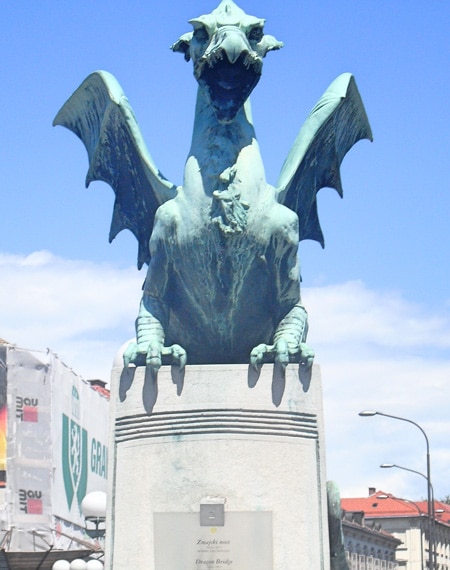
If you have flown directly into Slovenia, your holiday will begin in Ljubljana (other options include flying to Gratz, Austria, and hopping over the border if you are heading to the eastern end of Slovenia, and the Prekmurje region). Ljubljana itself, the country’s capital, is well worth exploring with all sorts to keep a family entertained and, just like many European cities, there’s so much history and beautiful architecture that simply strolling around is a delight.
A photo checklist includes the quirky Triple Bridge which connects the modern city centre with its historical, medieval sector. Though it’s easy to miss if you’re not looking out for it – it is, after all, just three bridges, side-by-side across the Ljubljanica River – it’s worth looking out for it, they’re very quirky and iconic of the city. More interesting still is the Dragon Bridge, just a couple of hundred yards further along the riverbank, guarded as it is by four copper dragons.
The Dragon Bridge is also handily placed for the House of Experiments, a hands-on science museum that’s perfect for families and keeping younger minds occupied after a stroll through the city. As you would expect from a capital city, food options are vast and varied, from the world-famous ice cream and desserts at Lolita (near to the Triple Bridge) to the Hot Horse, situated in Tivoli Park which sells, well..exactly what the name suggests.
On the topic of the city parks, Ljubljana is known for its green spaces and has won international awards for them. The Tivoli – one of the city’s four nature parks – is an iconic space and a perfect option for escaping the hustle and bustle of city life.
When it comes to getting around, car hire is available, as well as a bus and train station if you prefer to be car free. Buses offer regular access to the small outskirt areas of Bohinj, Bled and Maribor (all worth a visit), but Slovenia really is car-trip-friendly and worth the added convenience of operating under your own steam
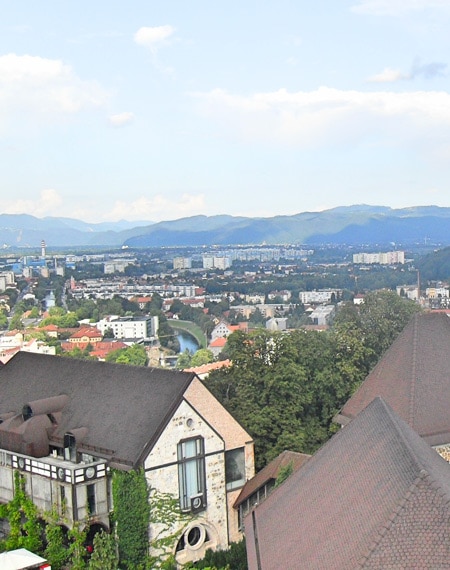
Another must-visit destination in the capital is Ljubljana Castle, which towers over the medieval part of the city. While you can walk or cycle up Castle Hill, the best – and most kid-delighting – way to get to the castle is by funicular railway.
Though the castle’s history is believed to date back 900 years, it is a very modern castle, hosting exhibitions, restaurants, museums, a café and even a nightclub. The Puppet Museum details Slovenia’s puppetry traditions, and includes the opportunity to try your hand in the Castle Theatre, while the Virtual Castle takes you on a virtual tour of the castle’s history.
A guided tour, the Ljubljana Castle Time Machine, is also available in either Slovenian or English. Your guides on the journey through the most important periods in Slovenia’s history include a Roman soldier, medieval townspeople and a French nun. Finally, the Outlook Tower offers stunning, 360-degree views over Ljubljana, offering the perfect chance to fully appreciate the city’s vast green spaces, its industrial heart and the varied backdrop against which it is set.
Maribor is Slovenia’s second-largest city and much quieter than Ljubljana, located in the north-east of the country towards the Austrian border.
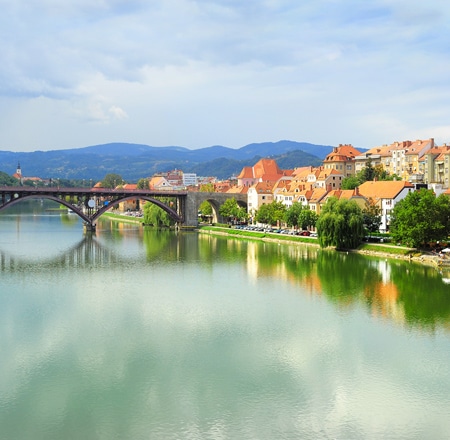
One of the city’s biggest tourist attractions is the Old Vine, and wine tasting at Old Vine House – a reflection of the city’s proximity to the country’s wine-producing hills – but there is still plenty of family-friendly fun to be had in Maribor too.
Like Ljubljana, there are plenty of green spaces including the city park, which houses the Aquarium-Terrarium, boasting 120 species of fish, more than 100 types of reptiles, amphibians and insects, and, they claim, the most poisonous snakes in the world.
A river cruise on the Drava is also available, with a 45-minute trip option or a longer 90-minute trip to Maribor Island. The city is also handily placed for the Pohorje Massif mountain range.
Away from Slovenia’s cities, there’s plenty to explore in the mountains too, from Pohorje in east to the Julian Alps on the Italian border in the west.
Lake Bohinj is a personal favourite, which, though not as famous as Lake Bled located 26km away, is a perfect base for outdoor exploring. Compared with Bled, the more popular of the two lakes, Bohinj is considerably less crowded and more serene, and both are connected to each other by bus, as well as to Ljubljana if you want to explore without the need for a car. You can hire rowing boats to explore the lake. The Alpinsport outdoor agency, located next to the lake, can also arrange canoeing, kayaking and mini-rafting on the Sava Bohijka river, with a minimum recommended age of six years old.
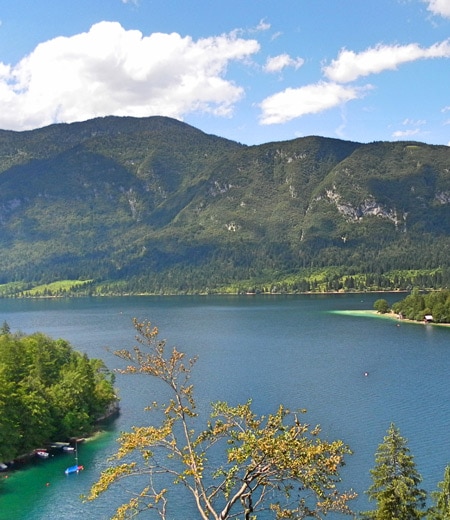
The river is suitable for beginners, and they will pick you up at the end. Away from the water, there are hiking and mountain bike trails to enjoy, with the popular Savica waterfall. As with much of Slovenia it can also be reached by car, along a tarmacked road so that you have the freedom to explore the area without the threat of little legs getting tired. Further on is the Vogel Ski Center, which transforms into a green-covered landscape when the snow melts. The undoubted highlight at Vogel is the cable-car ride up into the mountains, and you can then take the quad chairlift up to Orlove Glave for stunning panoramas.
Lake Bled is the better known of the two lakes because it has more to explore than just the lake itself, with an island in the middle, and Bled Castle overlooking it.
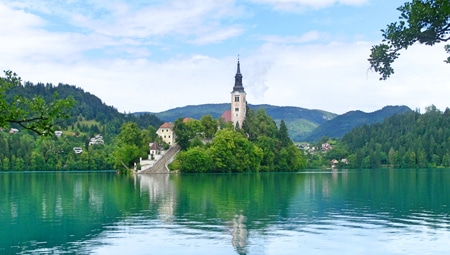
Wooden boats called pletnas take visitors across to the island, where you can ascend the 99 steps up to the Assumption of Mary Church, while the castle – perched over the lake on a cliff – offers activities ranging from the printing works, to forging your own souvenir coins on an anvil, to wine tasting.
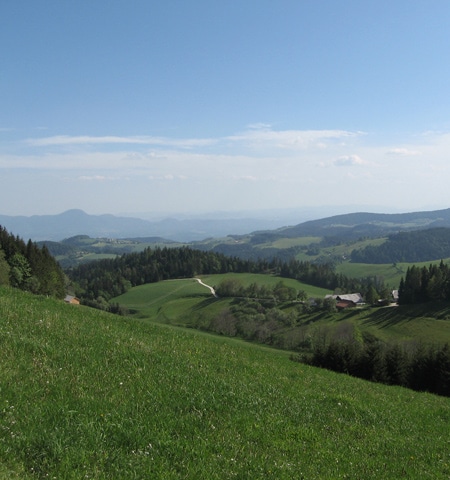
Vintgar Gorge is just a ten-minute drive from Bled, on the edge of the Triglav National Park, with transfers available too. Well-signed to get there, the path through the gorge covers 1600m in total across wooden bridges and galleries, to explore the Radovna river and Sum waterfall. When in Bled be sure to buy one of their famous cream cakes as a reward after a day’s exploring.
On the opposite side of the country, accessible from Maribor, Pohorje is either a vast green landscape or one of the country’s largest ski resorts, depending which time of year you go and visit.
In the summer, that means peat bogs and lakes, waterfalls, a primeval forest, hiking and biking trails, an adventure park and even summer toboggans.
At the heart of the Triglav National Park, the Soca Valley runs all the way through to the Italian Adriatic. If it’s outdoor and adventure you are after, the Soca Valley has it in abundance. Hiking, mountain biking, kayaking and rafting – the latter suitable for children as young as five – are all among the highlights, whilst a new Adventure Park opened in Bovec in 2017 with high ropes courses tailored by difficulty (one of which has been built specifically for visitors aged between three and 10).
Slovenia is also famous for its Karst, the limestone region it shares with northeast Italy, where water running through the soluble rocks has created underwater chambers and a series of caves and sinkholes to explore.
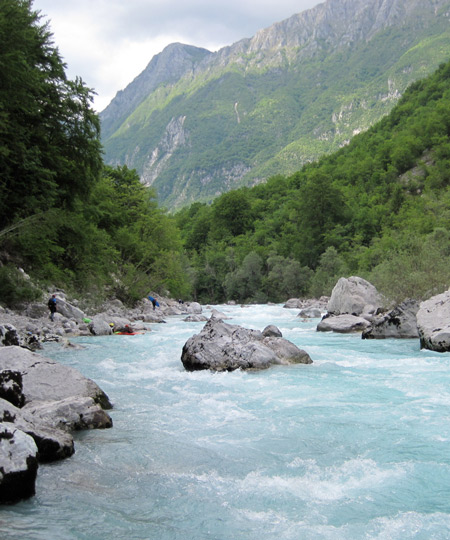
Some of the more famous caves include that at Predjama Castle – Predjama means ‘in the cave’ because that’s exactly what this castle is, in a cave on the side of a cliff. You can explore the castle itself and a stretch of the tunnels underneath it.
Predjama is also handily located for combining with a trip to the Postojna Cave – the largest of the Karst and Europe’s most visited cave. An underground railway takes you into the heart of the cave, which houses a network of passages, interesting rock formations and caverns.
Finally, Slovenia’s Adriatic Coast covers just 46km, but there is plenty to explore along it if you prefer to feel the sea breeze on your face. Piran, a Venetian town with rocky beaches, medieval streets and plenty of options for eating, sits on a peninsula on the southern end of the coast, while Portoroz is the better option if you want a trip to the seaside (well, imported sand anyway). It is very touristy – unashamedly so, in fact – but with wall-to-wall umbrellas and sun loungers, and a promenade packed with cafes, restaurants and playgrounds, there is plenty to do.
How to get there
Direct flights to Ljubljana fly from London whilst other regional airports have a stopover.
Best for
Families who want a multi centre holiday without flying long haul. With so many different terrains and landscapes, kids of all ages can enjoy adventure and outdoors activities, culture and history, and beach days all in one holiday.
Getting around
Car is the most convenient way as the country is so driving-friendly and with multiple areas to discover, you have the freedom to explore at your own pace and stop off whenever you like. If you prefer public transport, most major destinations are linked by train or bus.
Best time to go
July is the hottest month, averaging 20°C in the day. With many of the mountainous areas becoming ski destinations in the colder months, winter sports fans could find themselves a hidden gem of a spot.